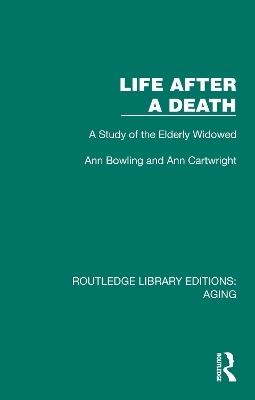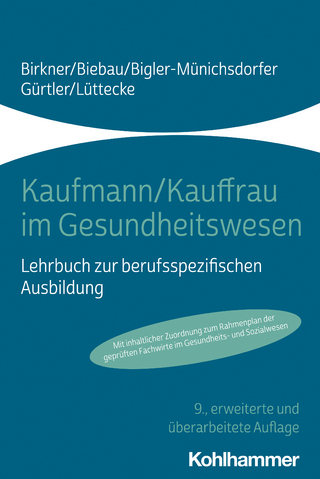
Life After A Death
A Study of the Elderly Widowed
Seiten
2024
Routledge (Verlag)
978-1-032-71500-1 (ISBN)
Routledge (Verlag)
978-1-032-71500-1 (ISBN)
First published in 1982, this title presents the results of a study of the experiences and attitudes of over 350 elderly widowed men and women, their GPs, relatives, friends, and neighbours, and considers the implications of the help the widowed received, or failed to receive, from those it was most likely that they would turn for support.
The recently widowed experience many complex problems, and an understanding of their needs and the kinds of difficulties they encounter is essential if appropriate services and help are to be mobilized. It is the old who are most likely to be widowed, and they may face this crisis at a time when they may also be adjusting to ill health and increasing infirmity, and to retirement, with its problems of role identification and adaptation to an increase in leisure and a decrease in wealth. Most will have to learn to live alone, or to uproot themselves from their home and adjust to life with relatives. Often, the elderly person will have been involved in caring for their spouse during his or her terminal illness; widowhood will mean that they have lost their main occupation. For some, who are themselves disabled, widowhood may mean that they have lost the person who cared for them, so that there is an immediate crisis as alternative sources of care need to be found. These problems have to be faced in a situation often complicated by the anxiety, loneliness, apathy, and bewilderment of bereavement.
Originally published in 1982, Life After A Death presents the results of a study of the experiences and attitudes of over 350 elderly widowed men and women, their general practitioners, and their relatives, friends, and neighbours, and considers the implications of the help the widowed received, or failed to receive, from those to whom it was most likely that they would turn for support. The authors’ identification and description of the emotional and practical day-to-day needs of the widowed, and their recommendations about the potential role of the general practitioner and voluntary and social services, should be considered by all those concerned to alleviate the difficulties of the widowed, and to help them to live a better ‘life after a death’.
The recently widowed experience many complex problems, and an understanding of their needs and the kinds of difficulties they encounter is essential if appropriate services and help are to be mobilized. It is the old who are most likely to be widowed, and they may face this crisis at a time when they may also be adjusting to ill health and increasing infirmity, and to retirement, with its problems of role identification and adaptation to an increase in leisure and a decrease in wealth. Most will have to learn to live alone, or to uproot themselves from their home and adjust to life with relatives. Often, the elderly person will have been involved in caring for their spouse during his or her terminal illness; widowhood will mean that they have lost their main occupation. For some, who are themselves disabled, widowhood may mean that they have lost the person who cared for them, so that there is an immediate crisis as alternative sources of care need to be found. These problems have to be faced in a situation often complicated by the anxiety, loneliness, apathy, and bewilderment of bereavement.
Originally published in 1982, Life After A Death presents the results of a study of the experiences and attitudes of over 350 elderly widowed men and women, their general practitioners, and their relatives, friends, and neighbours, and considers the implications of the help the widowed received, or failed to receive, from those to whom it was most likely that they would turn for support. The authors’ identification and description of the emotional and practical day-to-day needs of the widowed, and their recommendations about the potential role of the general practitioner and voluntary and social services, should be considered by all those concerned to alleviate the difficulties of the widowed, and to help them to live a better ‘life after a death’.
Ann Bowling and Ann Cartwright
Acknowledgements, 1. Introduction, 2. Caring for the spouse who died, 3. Information and discussion about the death, 4. Practical needs and circumstances in the early months of widowhood, 5. Health and the role of the general practitioner, 6. General practitioners' knowledge, perception, attitudes, and characteristics, 7. Emotional adjustment, loneliness, and their concomitants, 8. Isolation and the role of relatives and friends, 9. The impact on the familiars, 10. What can be done?, Appendices, Name index, Subject index
| Erscheinungsdatum | 19.04.2024 |
|---|---|
| Reihe/Serie | Routledge Library Editions: Aging |
| Verlagsort | London |
| Sprache | englisch |
| Maße | 138 x 216 mm |
| Gewicht | 648 g |
| Themenwelt | Sachbuch/Ratgeber ► Gesundheit / Leben / Psychologie |
| Medizin / Pharmazie ► Medizinische Fachgebiete ► Psychiatrie / Psychotherapie | |
| Studium ► Querschnittsbereiche ► Prävention / Gesundheitsförderung | |
| Sozialwissenschaften ► Pädagogik ► Sozialpädagogik | |
| Sozialwissenschaften ► Soziologie | |
| ISBN-10 | 1-032-71500-6 / 1032715006 |
| ISBN-13 | 978-1-032-71500-1 / 9781032715001 |
| Zustand | Neuware |
| Haben Sie eine Frage zum Produkt? |
Mehr entdecken
aus dem Bereich
aus dem Bereich
das Manual zur psychologischen Gesundheitsförderung
Buch | Hardcover (2023)
Springer Berlin (Verlag)
39,99 €
Lehrbuch zur berufsspezifischen Ausbildung
Buch | Softcover (2021)
Kohlhammer (Verlag)
46,00 €
Wissenschaftlich basierte Empfehlungen, Tipps und Ernährungspläne für …
Buch (2022)
Thieme (Verlag)
51,00 €


